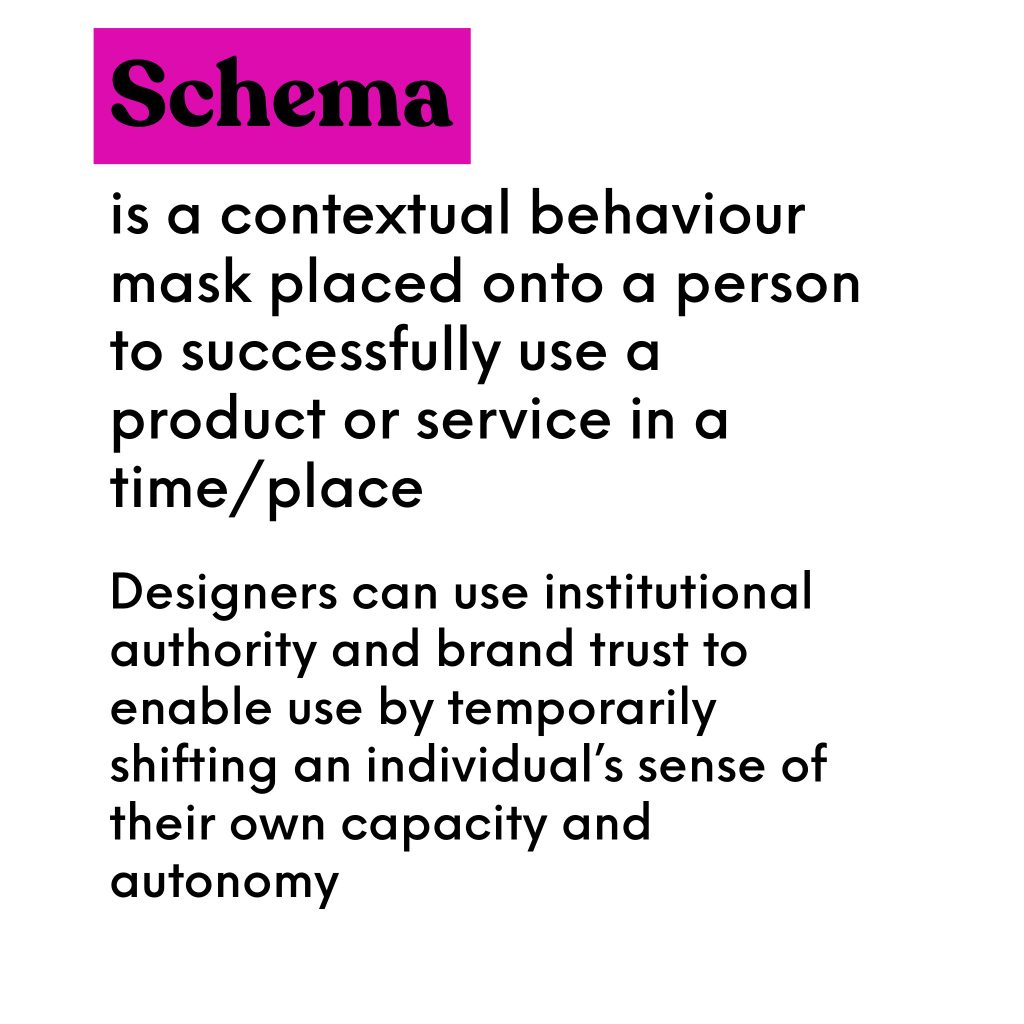
Starting with Marshmallows
The Marshmallow Test is most often used to deride children and their current, and possibly future, self control. However, there is also something else in the research. When children were allowed to talk to a parent/care giver before the test and they said how great the kid was and how good their self-control was then the children performed better in the test.
This kind of behaviour should not be surprising. People are social and our sense of our own capacities can shift when we are in different places/times. This is what also comes up in Shoda’s Contextual Identity research. The individual shifts as the place and people they are with shifts. A ‘bad kid’ in one class with one teacher can be a ‘great student’ with another teacher and in another topic of study. It is worth reading Todd Rose’s The End Of Average which is where I first came across this research.
Enabling more (and less)
What this means is that design can, positively and negatively, use context, authority and trust to shift the meta-cognition of individuals.
In positive terms, this is part of Enablement Theory. The use of design to reduce relational disability by shifting the perceived capacities of an individual.
The negative side is sadly visible in scams when a person is panicked and pressured into giving away financial details by a scammer saying they’re a police officer or bank official.
Masks and Masking
Finally, I use the word ‘mask’ here deliberately but with great awareness that this may be a form of appropriation. It’s most often used within the autism community to discuss necessary personal skills to survive within social environments that are painful or difficult to navigate as an autistic person. I am not trying to obliterate or disregard that meaning. However, coming from Shoda’s work, it is worth considering how the individual need to shift the public-facing and perceived personality to meet the needs of that context is an issue for all people. It is a much stronger and more essential issue for autistic people but it is a need that is true for all people.
Design for Schema can help with relational disability (a term I only heard on this very good radio discussion of What is Normal) such as autism, but it is also meaningful more generally. Being aware of how institutional voice and authority work in content design and how branding works in trust and service design helps the overall design of new products and services.